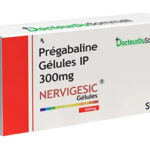Addiction recovery has always been a challenging journey, requiring a combination of therapy, medication, and strong willpower. However, with advancements in technology, Virtual Reality (VR) is emerging as a groundbreaking tool in addiction treatment. By creating immersive, controlled environments, VR helps individuals confront triggers, practice coping mechanisms, and rewire their brains in ways traditional methods cannot.
This article explores how VR is revolutionizing addiction rehab, the science behind its effectiveness, real-world applications, and what the future holds for this innovative approach.
Addiction recovery has always been a challenging journey, requiring a combination of therapy, medication, and strong willpower. However, with advancements in technology, Virtual Reality (VR) is emerging as a groundbreaking tool in addiction treatment. By creating immersive, controlled environments, VR helps individuals confront triggers, practice coping mechanisms, and rewire their brains in ways traditional methods cannot.
Understanding Addiction and Traditional Treatment Limitations
Addiction is a complex brain disorder characterized by compulsive substance use despite harmful consequences. Traditional treatments include:
-
Cognitive Behavioral Therapy (CBT)
-
Medication-Assisted Treatment (MAT)
-
Support groups (e.g., AA, NA)
While effective, these methods have limitations:
-
Relapse rates remain high (40-60% for substance abuse).
-
Real-world triggers are hard to simulate in therapy.
-
Stigma prevents many from seeking help.
VR bridges these gaps by offering a safe, immersive space to practice resistance and emotional regulation.
How VR is Transforming Addiction Treatment
1. Exposure Therapy in a Controlled Environment
VR allows therapists to simulate high-risk situations (bars, parties, stressful scenarios) without real-world risks. Patients can:
-
Face cravings in a safe setting
-
Practice refusal skills
-
Gradually reduce anxiety around triggers
Example: A study by the University of Houston found that VR-based exposure therapy reduced cravings by up to 70% in nicotine addicts.
2. Neuroplasticity and Brain Rewiring
Addiction alters brain pathways, making recovery difficult. VR leverages neuroplasticity—the brain’s ability to reorganize itself.
-
Mindfulness VR apps reduce stress (a major relapse trigger).
-
Gamified therapy reinforces positive behavior.
Case Study: A rehab center in Spain reported 40% higher retention rates when using VR alongside traditional therapy.
3. Personalized Treatment Plans
AI-powered VR systems adapt scenarios based on patient responses, ensuring tailored therapy.
-
Biometric feedback (heart rate, eye tracking) adjusts difficulty.
-
Real-time therapist monitoring enhances outcomes.
Real-World Applications of VR in Rehab
1. Alcohol and Substance Abuse
-
“Virtual Bar” Simulations: Patients practice resisting drinks in social settings.
-
Craving Management: VR distracts from withdrawal symptoms using calming environments.
2. Nicotine and Smoking Cessation
-
VR aversion therapy associates smoking with unpleasant stimuli.
-
Breathing exercises in VR reduce stress-related cravings.
3. Gambling and Behavioral Addictions
-
Virtual casinos teach impulse control.
-
Exposure therapy reduces compulsive urges.
4. Opioid and Prescription Drug Addiction
-
Pain management VR reduces reliance on opioids.
-
Meditation VR helps cope with chronic pain without drugs.
Scientific Backing: Does VR Really Work?
Multiple studies confirm VR’s efficacy:
| Study | Findings |
|---|---|
| University of Southern California | VR reduced PTSD-related alcohol cravings by 50%. |
| Johns Hopkins University | 75% of patients reported lower anxiety after VR therapy. |
| National Institute on Drug Abuse (NIDA) | VR combined with CBT doubled abstinence rates. |
Challenges and Ethical Considerations
While promising, VR rehab faces hurdles:
-
High costs of VR equipment.
-
Need for trained therapists to guide sessions.
-
Potential over-reliance on tech instead of human connection.
Ethical concerns:
-
Privacy risks with biometric data.
-
Ensuring accessibility across socioeconomic groups.
The Future of VR in Addiction Treatment
-
Wider Adoption in Rehab Centers
-
Clinics like Gjds Rehab are integrating VR into programs.
-
-
Home-Based VR Therapy
-
Affordable headsets could enable remote treatment.
-
-
AI + VR Integration
-
Smart algorithms predict relapse risks and adjust therapy.
-
-
Government and Insurance Support
-
Policies may soon cover VR-based rehab.
-
Conclusion
Virtual Reality is no longer just for gaming—it’s a life-changing tool in addiction recovery. By simulating real-world triggers, enhancing neuroplasticity, and offering personalized therapy, VR is setting a new standard in rehab.
While challenges remain, the future looks bright as more institutions, including Gjds, adopt this immersive technology. As research grows, VR could become a cornerstone in winning the battle against addiction.
- Virtual Reality (VR) for Addiction: How Immersive Tech Is Changing Rehab
- Addiction is a complex brain disorder characterized by compulsive substance use despite harmful consequences. Traditional treatments include:
- Health
Related posts:
 What Are the Key Considerations Before Getting Filler Injections?
What Are the Key Considerations Before Getting Filler Injections?
 Dr. Kami Hoss Gives Out the Truth About Brushing & Flossing-Protecting Your Teeth
Dr. Kami Hoss Gives Out the Truth About Brushing & Flossing-Protecting Your Teeth
 Can Atrial Fibrillation Be Cured? Latest Research & Insights
Can Atrial Fibrillation Be Cured? Latest Research & Insights
 Expert Lung Care in Jaipur: Why You Shouldn’t Ignore Breathing Issues
Expert Lung Care in Jaipur: Why You Shouldn’t Ignore Breathing Issues
 Control Fasting Blood Sugar with Confidence – Get Glycomet Online Today
Control Fasting Blood Sugar with Confidence – Get Glycomet Online Today
 Effective Weight Loss Clinic Killeen: Your Path to Lasting Results
Effective Weight Loss Clinic Killeen: Your Path to Lasting Results
 How to Prepare for Your Appointment with the Best Plastic Surgeon in dubai for Fillers
How to Prepare for Your Appointment with the Best Plastic Surgeon in dubai for Fillers
 Comment les analgésiques sur ordonnance se comparent-ils aux options en vente libre ?
Comment les analgésiques sur ordonnance se comparent-ils aux options en vente libre ?







